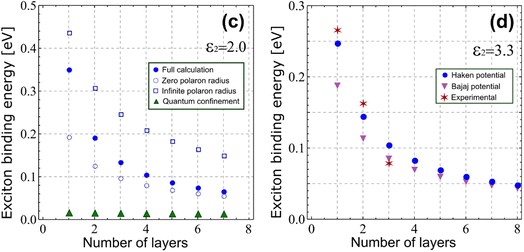 Open Access Article
Open Access ArticleCreative Commons Attribution 3.0 Unported Licence
Correction: Excitons in metal halide perovskite nanoplatelets: an effective mass description of polaronic, dielectric and quantum confinement effects
Jose L.
Movilla
 a,
Josep
Planelles
a,
Josep
Planelles
 b and
Juan I.
Climente
b and
Juan I.
Climente
 *b
*b
aDepartament d’Educació i Didàctiques Específiques, Universitat Jaume I, Av. Sos Baynat, s/n, 12071 Castelló, Spain
bDepartament de Química Física i Analítica, Universitat Jaume I, Av. Sos Baynat, s/n, 12071 Castelló, Spain. E-mail: climente@uji.es
First published on 3rd April 2024
Abstract
Correction for ‘Excitons in metal halide perovskite nanoplatelets: an effective mass description of polaronic, dielectric and quantum confinement effects’ by Jose L. Movilla et al., Nanoscale Adv., 2023, 5, 6093–6101, https://doi.org/10.1039/d3na00592e.
The authors regret a data post-processing error relating to the calculation of the binding energies shown in panels (c) and (d) of Fig. 2 in the original paper. The correct panels are displayed here in Fig. 1. Contrary to what is stated in the paper, Fig. 1(d) shows that the Haken potential provides quantitative estimates of experimental binding energies, without the need to resort to phenomenological corrections such as the Bajaj potential. In fact, the Bajaj potential underestimates the exciton binding energy in few-layer structures. Otherwise, the qualitative analysis of the figure is unaffected, as well as the computational codes provided along with the original article.
The Royal Society of Chemistry apologises for these errors and any consequent inconvenience to authors and readers.
| This journal is © The Royal Society of Chemistry 2024 |

